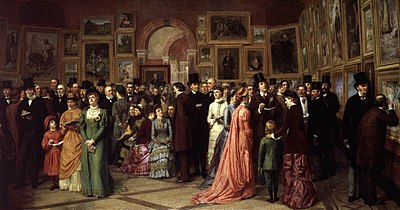
Sir John Everett Millais, 1st Baronet was an English painter and illustrator who was one of the founders of the Pre-Raphaelite Brotherhood. He was a child prodigy who, aged eleven, became the youngest student to enter the Royal Academy Schools. The Pre-Raphaelite Brotherhood was founded at his family home in London, at 83 Gower Street. Millais became the most famous exponent of the style, his painting Christ in the House of His Parents (1849–50) generating considerable controversy, and he produced a picture that could serve as the embodiment of the historical and naturalist focus of the group, Ophelia, in 1851–52.

The Pre-Raphaelite Brotherhood was a group of English painters, poets, and art critics, founded in 1848 by William Holman Hunt, John Everett Millais, Dante Gabriel Rossetti, William Michael Rossetti, James Collinson, Frederic George Stephens and Thomas Woolner who formed a seven-member "Brotherhood" partly modelled on the Nazarene movement. The Brotherhood was only ever a loose association and their principles were shared by other artists of the time, including Ford Madox Brown, Arthur Hughes and Marie Spartali Stillman. Later followers of the principles of the Brotherhood included Edward Burne-Jones, William Morris and John William Waterhouse.

William Powell Frith was an English painter specialising in genre subjects and panoramic narrative works of life in the Victorian era. He was elected to the Royal Academy in 1853, presenting The Sleeping Model as his Diploma work. He has been described as the "greatest British painter of the social scene since Hogarth".

The Lady Lever Art Gallery is a museum founded and built by the industrialist and philanthropist William Lever, 1st Viscount Leverhulme and opened in 1922. The Lady Lever Art Gallery is set in the garden village of Port Sunlight, on the Wirral and one of the National Museums Liverpool.
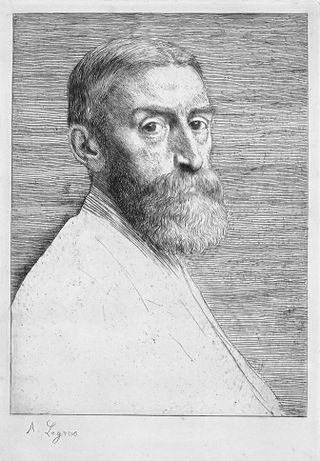
Sir Edward John Poynter, 1st Baronet was an English painter, designer, and draughtsman, who served as President of the Royal Academy.

The Royal Birmingham Society of Artists (RBSA) is an art society, based in the Jewellery Quarter in Birmingham, England, where it owns and operates an art gallery, the RBSA Gallery, on Brook Street, just off St Paul's Square. It is both a registered charity, and a registered company.
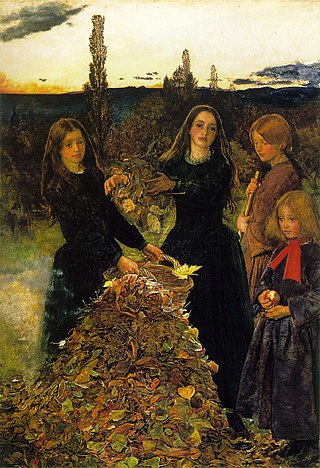
Autumn Leaves (1856) is a painting by John Everett Millais exhibited at the Royal Academy in 1856. It was described by the critic John Ruskin as "the first instance of a perfectly painted twilight." Millais's wife Effie wrote that he had intended to create a picture that was "full of beauty and without a subject".

Mariana is an 1851 oil-on-panel painting by John Everett Millais. The image depicts the solitary Mariana from William Shakespeare's Measure for Measure, as retold in Tennyson's 1830 poem "Mariana". The painting is regarded as an example of Millais's "precision, attention to detail, and stellar ability as a colorist". It has been held by Tate Britain since 1999.
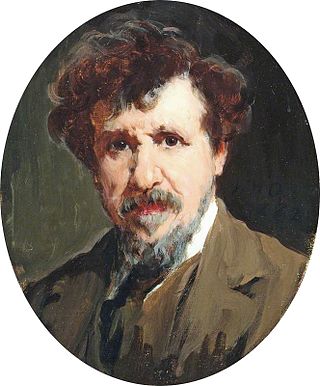
Thomas Oldham Barlow was an English mezzotint engraver. His prints helped to popularise the works of painters like John Phillip and Sir John Everett Millais.

Louise Jane Jopling was an English painter of the Victorian era, and one of the most prominent female artists of her generation.

Henrietta Emma Ratcliffe Rae was a British painter of the late Victorian era, who specialised in classical, allegorical and literary subjects. Her best-known painting is The Lady with the Lamp (1891); depicting Florence Nightingale at Scutari.

Marion Harry Alexander Spielmann was a prolific Victorian art critic and scholar who was the editor of The Connoisseur and Magazine of Art. Among his voluminous output, he wrote a history of Punch, the first biography of John Everett Millais and a detailed investigation into the evidence for portraits of William Shakespeare.

Henry Sass was an English artist and teacher of painting, who founded an important art school, Sass's Academy, in London, to provide training for those seeking to enter the Royal Academy. Many distinguished British painters received their early training here. Such was Sass's commitment to art education that Sir David Wilkie said he could have "taught a stone to draw".

The Derby Day is a large oil painting showing a panoramic view of The Derby, painted by William Powell Frith over 15 months from 1856 to 1858. It has been described by Christie's as Frith's "undisputed masterpiece" and also "arguably the definitive example of Victorian modern-life genre."

Ramsgate Sands, also known as Life at the Seaside, is an oil-on-canvas painting by William Powell Frith, made from 1851 to 1854, which depicts a beach scene in Ramsgate. The painting was Frith's first great commercial success: it was exhibited at the Royal Academy summer exhibition in 1854, and bought by Queen Victoria. Frith made a series of similar pictures, showing groups of people in contemporary scenes, including The Derby Day of 1858, The Railway Station of 1862, and Private View at the Royal Academy of 1883.

Victorian painting refers to the distinctive styles of painting in the United Kingdom during the reign of Queen Victoria (1837–1901). Victoria's early reign was characterised by rapid industrial development and social and political change, which made the United Kingdom one of the most powerful and advanced nations in the world. Painting in the early years of her reign was dominated by the Royal Academy of Arts and by the theories of its first president, Joshua Reynolds. Reynolds and the academy were strongly influenced by the Italian Renaissance painter Raphael, and believed that it was the role of an artist to make the subject of their work appear as noble and idealised as possible. This had proved a successful approach for artists in the pre-industrial period, where the main subjects of artistic commissions were portraits of the nobility and military and historical scenes. By the time of Victoria's accession to the throne, this approach was coming to be seen as stale and outdated. The rise of the wealthy middle class had changed the art market, and a generation who had grown up in an industrial age believed in the importance of accuracy and attention to detail, and that the role of art was to reflect the world, not to idealise it.
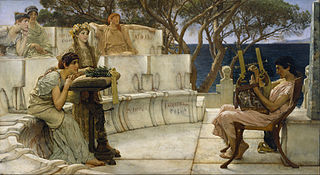
Sappho and Alcaeus is an 1881 oil-on-canvas painting by the English artist Lawrence Alma-Tadema. It is held by the Walters Art Museum, in Baltimore.

Applicants for Admission to a Casual Ward is an 1874 oil painting by British painter Luke Fildes, a key work in nineteenth-century British social realism. The painting shows a street scene of impoverished and weary men, women and children waiting by the side of the road outside a police station, huddled against the cold evening, waiting to be given a ticket for temporary admission to a workhouse for the night. Many resisted taking up permanent residence at the workhouse, where men and women would be separated, and would be required to work to pay for their board and lodging; once they entered, many only left when they died. Instead, from 1864, if the police in London certified that a person was genuinely in need, they could stay for one night on a "casual" basis, and leave the next morning, but they would have to queue up again for temporary admission the next evening. Poverty and vagrancy were pressing issues in Victorian London, and the issuance of "casual" tickets doubled from around 200,000 in 1864 to over 400,000 in 1869.

The Last Muster is an 1875 oil painting by Sir Hubert von Herkomer, based on his wood engraving Sunday at the Chelsea Hospital published in The Graphic on 18 February 1871. The painting is in the Lady Lever Art Gallery in Port Sunlight, Wirral.
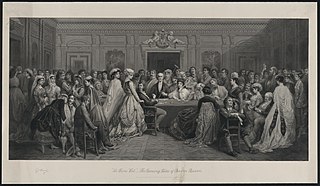
Salon D'Or, Homburg, is an 1871 oil painting by William Powell Frith. It is held by the Rhode Island School of Design Museum in Providence, Rhode Island.
